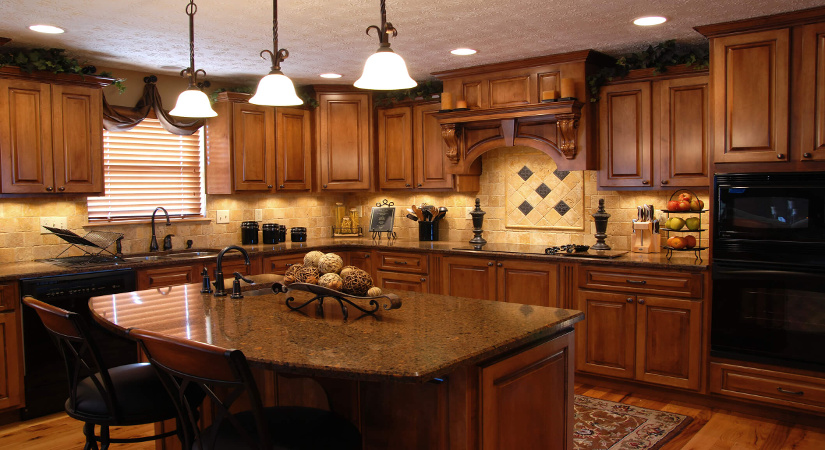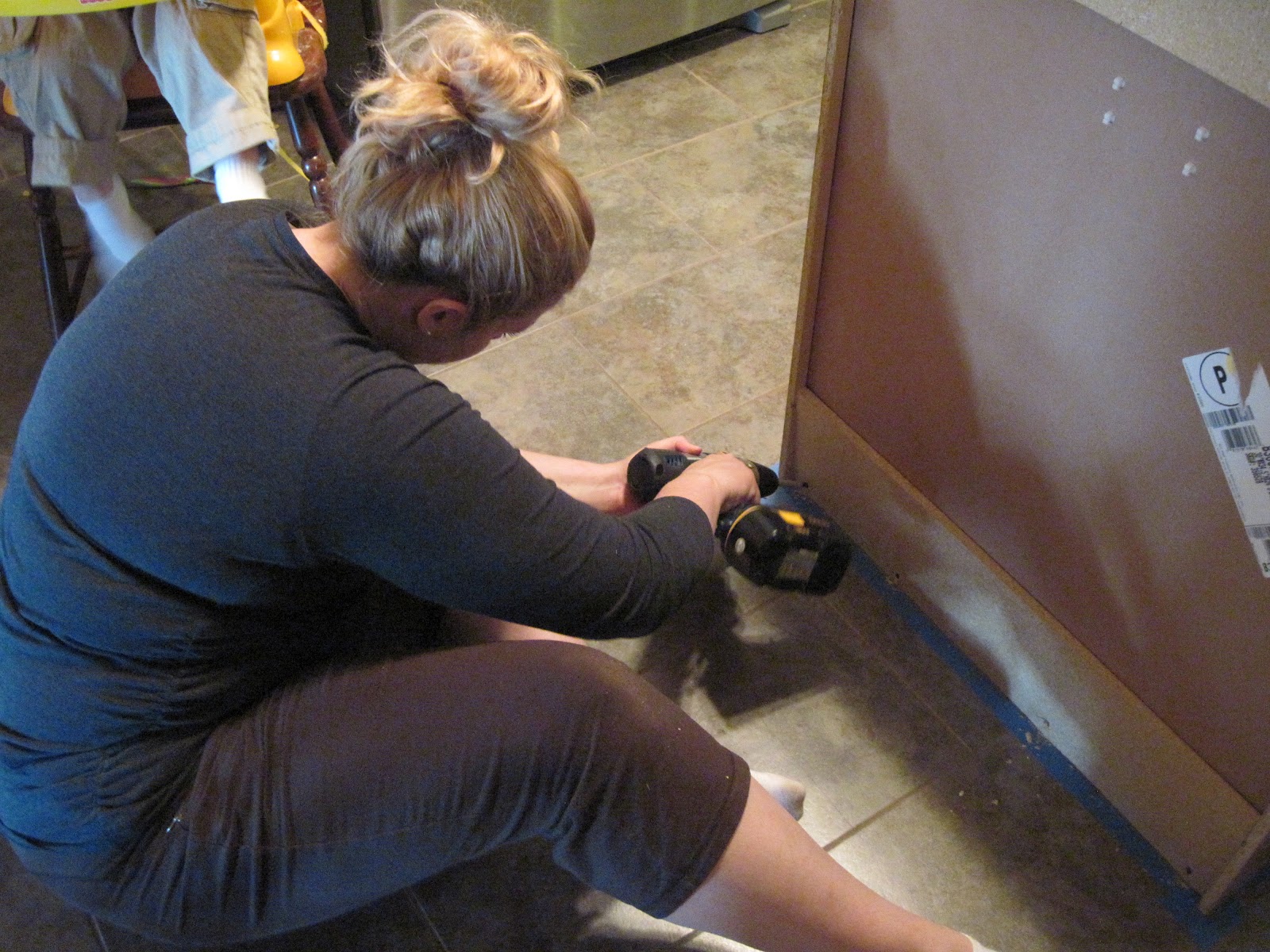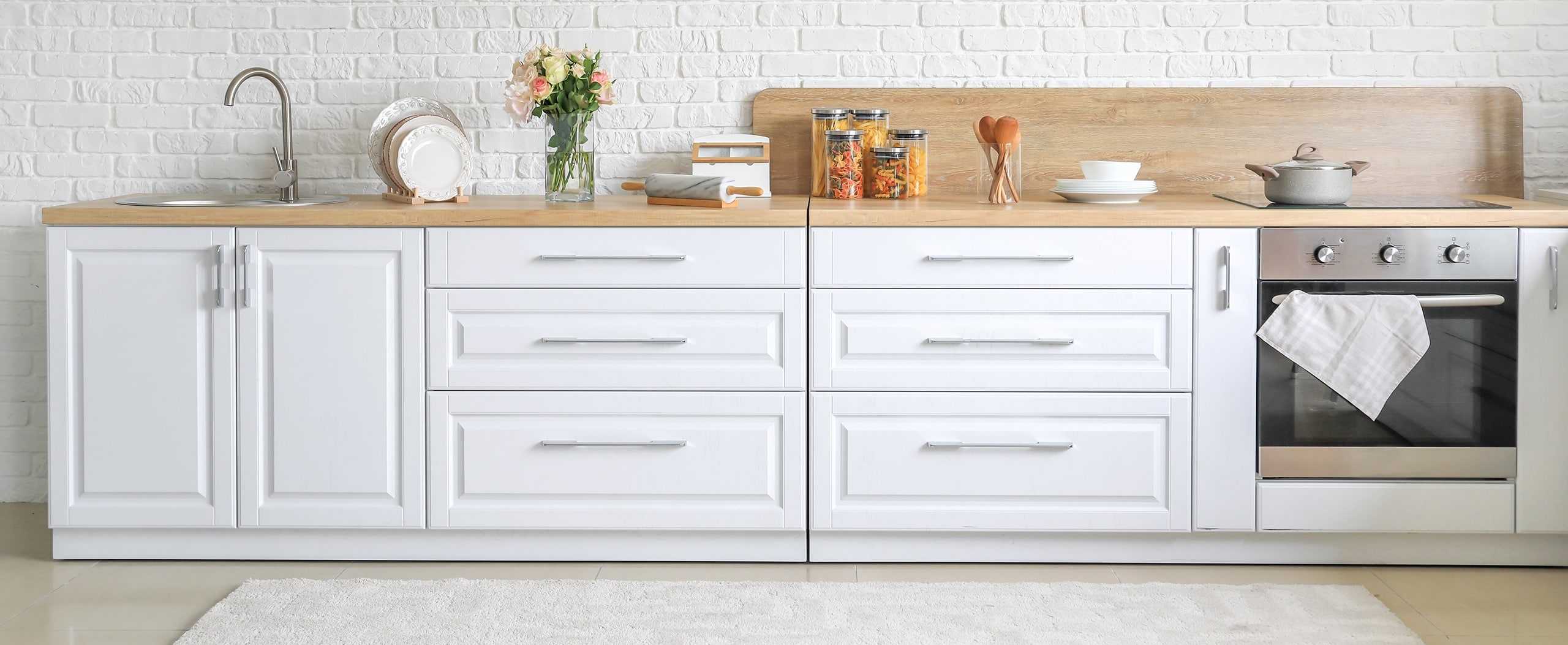1. How to Mount Kitchen Cabinets to the Wall
Mounting kitchen cabinets to the wall is a crucial step in any kitchen renovation or remodel. It not only adds functionality and storage space to your kitchen, but it also enhances the overall aesthetic of the room. However, the process of mounting cabinets to the wall can seem daunting. But with the right tools and knowledge, you can easily install your kitchen cabinets yourself. In this article, we will provide you with a step-by-step guide on how to mount kitchen cabinets to the wall.
2. Step-by-Step Guide for Installing Kitchen Cabinets
The first step in mounting kitchen cabinets is to carefully measure and mark the layout of your cabinets on the wall. This will ensure that your cabinets are evenly spaced and level. Next, you will need to locate and mark the studs in the wall. This is crucial for proper support and stability of the cabinets. Once you have marked the layout and studs, you can begin the installation process. This involves attaching a ledger board to the wall, which will act as a temporary support for the cabinets. Then, you can start installing the cabinets, starting from the corner and working your way out.
3. Tools and Materials Needed for Mounting Kitchen Cabinets
Before you begin the installation process, it is important to gather all the necessary tools and materials. This includes a measuring tape, level, stud finder, drill, screws, and a ladder. You will also need the cabinets themselves, as well as any additional hardware, such as knobs or handles. It is important to have all these tools and materials on hand to ensure a smooth and efficient installation process.
4. Tips for Properly Securing Kitchen Cabinets to the Wall
One of the most important aspects of mounting kitchen cabinets is properly securing them to the wall. This not only ensures the stability of the cabinets but also prevents any accidents or injuries. To properly secure the cabinets, make sure to use the appropriate screws and attach them directly into the studs. You should also use shims to level the cabinets and ensure they are flush against the wall. Additionally, it is recommended to have someone assist you in holding the cabinets in place while you secure them to the wall.
5. Common Mistakes to Avoid When Mounting Kitchen Cabinets
While mounting kitchen cabinets may seem like a straightforward process, there are some common mistakes that can easily be avoided. One of the most common mistakes is not properly marking the layout and studs on the wall. This can result in uneven cabinets and may lead to instability. Another mistake is using the wrong size or type of screws for securing the cabinets. It is important to use screws that are long enough to reach the studs and are strong enough to hold the weight of the cabinets.
6. How to Find and Mark Studs for Mounting Kitchen Cabinets
Finding and marking the studs on the wall is a crucial step in the installation process. This ensures that your cabinets are properly supported and secure. To find the studs, you can use a stud finder or knock on the wall to listen for a solid sound. Once you have located the studs, mark them with a pencil. It is recommended to mark the studs at both the top and bottom of where the cabinets will be installed.
7. Different Methods for Hanging Kitchen Cabinets
There are a few different methods for hanging kitchen cabinets, depending on the type of cabinets you have. One method is using a French cleat, which involves attaching a metal bracket to the wall and the cabinet, allowing for easy installation and removal. Another method is using a rail system, where a metal rail is attached to the wall and the cabinets are hung onto it. This method is great for heavier cabinets and provides extra support.
8. How to Adjust and Level Kitchen Cabinets Once Mounted
After you have secured the cabinets to the wall, it is important to check and adjust them to ensure they are level. This can be done by using a level and shims. If the cabinets are not level, use shims to adjust them until they are. You can also use shims to fill any gaps between the cabinets and the wall. Once the cabinets are level and secure, you can remove the temporary ledger board and make any final adjustments.
9. Securing Upper Kitchen Cabinets to the Wall
When installing upper kitchen cabinets, it is important to have the help of another person to hold the cabinets in place while you secure them to the wall. It is also recommended to use a ladder for easier access. Once the cabinets are in place, make sure to secure them to the wall using the appropriate screws and into the studs. It is also important to check and adjust the level of the cabinets before fully securing them.
10. How to Install Kitchen Cabinet Hardware After Mounting
After you have successfully mounted your kitchen cabinets, the final step is to install the hardware. This includes adding knobs or handles to the doors and drawers. Make sure to measure and mark the placement of the hardware before drilling any holes. This will ensure that the hardware is evenly spaced and aligned. Once the hardware is installed, your kitchen cabinets are ready to use!
Mounting kitchen cabinets to the wall may seem like a daunting task, but with the right tools and knowledge, it can be easily accomplished. Remember to properly measure and mark the layout and studs, use the appropriate screws and hardware, and check for levelness throughout the installation process. By following these tips and steps, you can successfully mount your kitchen cabinets and transform your kitchen into a functional and beautiful space.
How to Mount Kitchen Cabinets to Your Wall for a Sleek and Organized Kitchen Design

Why Mounting Your Kitchen Cabinets is Essential for a Functional Kitchen Design
 When designing your dream kitchen, one of the most important aspects to consider is the placement of your
kitchen cabinets
. Not only do they provide ample storage space for all your cooking essentials, but they also contribute significantly to the overall style and design of your kitchen.
Mounting
your cabinets to the wall is a crucial step in creating a functional and organized kitchen. Not only does it save valuable floor space, but it also prevents any potential accidents or injuries caused by unstable cabinets. In this article, we will guide you through the process of
mounting kitchen cabinets
to your wall, ensuring a sleek and clutter-free kitchen design.
When designing your dream kitchen, one of the most important aspects to consider is the placement of your
kitchen cabinets
. Not only do they provide ample storage space for all your cooking essentials, but they also contribute significantly to the overall style and design of your kitchen.
Mounting
your cabinets to the wall is a crucial step in creating a functional and organized kitchen. Not only does it save valuable floor space, but it also prevents any potential accidents or injuries caused by unstable cabinets. In this article, we will guide you through the process of
mounting kitchen cabinets
to your wall, ensuring a sleek and clutter-free kitchen design.
Gathering the Necessary Tools and Materials
 Before you begin the
mounting
process, make sure you have all the necessary tools and materials at hand. These include a drill, screws, a level, a stud finder, and a pencil. Additionally, you will need the cabinet itself, along with any mounting hardware that may come with it. It is important to have all these items ready before starting to avoid any delays or interruptions during the installation process.
Before you begin the
mounting
process, make sure you have all the necessary tools and materials at hand. These include a drill, screws, a level, a stud finder, and a pencil. Additionally, you will need the cabinet itself, along with any mounting hardware that may come with it. It is important to have all these items ready before starting to avoid any delays or interruptions during the installation process.
Finding and Marking the Studs
 The first step in
mounting
your kitchen cabinets is to locate and mark the studs on your wall. These are the vertical wooden beams behind your drywall that provide the necessary support for
mounting
heavy objects. Using a stud finder, locate the studs and mark their positions with a pencil. This will ensure that your cabinets are securely attached to the wall and can hold the weight of your dishes, pots, and pans.
The first step in
mounting
your kitchen cabinets is to locate and mark the studs on your wall. These are the vertical wooden beams behind your drywall that provide the necessary support for
mounting
heavy objects. Using a stud finder, locate the studs and mark their positions with a pencil. This will ensure that your cabinets are securely attached to the wall and can hold the weight of your dishes, pots, and pans.
Measuring and Marking the Cabinet Placement
 Once you have marked the studs, it's time to measure and mark the exact placement of your
kitchen cabinet
. Use a level to ensure that the cabinet will be installed straight and mark the top and bottom of the cabinet on the wall. Additionally, measure and mark the location of any mounting hardware that may be included with your cabinet.
Once you have marked the studs, it's time to measure and mark the exact placement of your
kitchen cabinet
. Use a level to ensure that the cabinet will be installed straight and mark the top and bottom of the cabinet on the wall. Additionally, measure and mark the location of any mounting hardware that may be included with your cabinet.
Drilling and Attaching the Cabinet to the Wall
 Now it's time to
mount
the cabinet to the wall. Using a drill, create pilot holes on the marked locations for the screws. Make sure to drill into the studs for maximum support. Then, have someone hold the cabinet in place while you attach it to the wall using the screws and mounting hardware. Use a level to ensure that the cabinet is straight and adjust as necessary.
Now it's time to
mount
the cabinet to the wall. Using a drill, create pilot holes on the marked locations for the screws. Make sure to drill into the studs for maximum support. Then, have someone hold the cabinet in place while you attach it to the wall using the screws and mounting hardware. Use a level to ensure that the cabinet is straight and adjust as necessary.
Finishing Touches
 Once your
kitchen cabinet
is securely mounted to the wall, you can add any finishing touches. This may include adding trim or caulk to fill any gaps between the cabinet and the wall. You can also install shelves or organizers inside the cabinet for added functionality and organization.
Once your
kitchen cabinet
is securely mounted to the wall, you can add any finishing touches. This may include adding trim or caulk to fill any gaps between the cabinet and the wall. You can also install shelves or organizers inside the cabinet for added functionality and organization.
In Conclusion
 Mounting kitchen cabinets
to your wall is an essential step in creating a functional and aesthetically pleasing kitchen design. With the right tools and materials, along with proper measurements and installation techniques, you can easily achieve a sleek and organized kitchen. Follow these steps and soon you'll have a beautiful and practical kitchen that you can enjoy for years to come.
Mounting kitchen cabinets
to your wall is an essential step in creating a functional and aesthetically pleasing kitchen design. With the right tools and materials, along with proper measurements and installation techniques, you can easily achieve a sleek and organized kitchen. Follow these steps and soon you'll have a beautiful and practical kitchen that you can enjoy for years to come.

























/ways-to-clean-wood-kitchen-cabinets-3017289-01-765f893e7cca49a1ab72d7c49efdf518.jpg)



:max_bytes(150000):strip_icc()/dishwasherspacingillu_color8-dbd0b823e01646f3b995a779f669082d.jpg)





































/DesignedbyEmilyHendersonDesign_PhotobySaraTramp_33-468a90bab29049818c24ab5eee4bdfc1.jpg)


















































